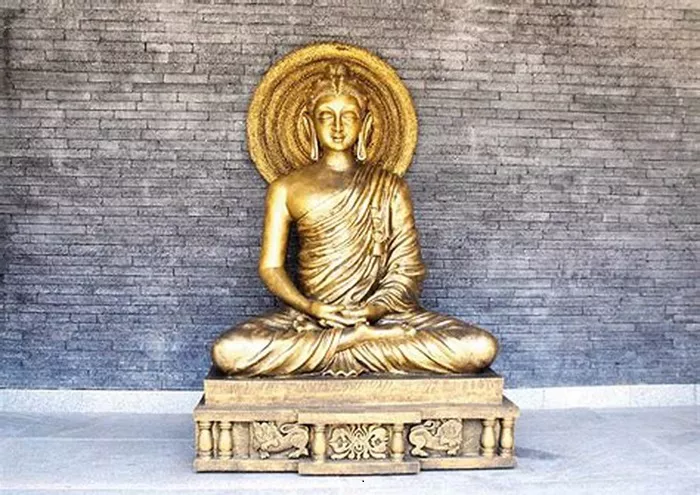India is the birthplace of many faiths and religions. Throughout history, many philosophers emerged who contributed to the various schools of thought prevalent in the country.
These philosophical ideas also spread among the public and gradually became integrated into the social thought system. The most prominent among them are Gautama Buddha, Mahavira, Swami Chavak, etc.
It is also worth noting that India’s eternal ideology also provides equal opportunities for all religions to flourish. There are ideological differences between the emerging religions and the ancient Vedic tradition, but this has never led to hostility and violence.
Among the above-mentioned sects, Buddhism has spread not only in India but also around the world like other sects.
About 2,600 years ago, the Kshatriya Bodhisattva Siddhartha Gautama took the path of non-violence in order to eradicate various evils in the society, and Buddhism was born.
Buddhist philosophy mainly focuses on eliminating cumbersome rituals, which is contrary to the virtues of Vedic Hindu tradition, but this has never led to hostility between Hindus and Buddhists.
Modern history books and documents record the enmity and violence between the two groups, but from an archaeological point of view, this does not seem to be true. Many historians also rely on ancient documents to record that Indian kings demolished the stupa. But the question is, is there any archaeological evidence for this?
The Sunga dynasty, which is considered to be the greatest enemy of Buddhists, ruled about 2,200 years ago. The Sunga kings who ruled a vast territory in India believed in the Vedic tradition, but did the Sungas destroy the stupa? The answer is no.
The world-famous Sanchi stupa was built during the Maurya dynasty. The reason why it is still intact is that during the Sunga period, the entire stupa was covered with stone walls. In addition, the Sunga dynasty also built the stone-built Vedas and pradaksinapath.
Not only that, the Torana gate was built at Sanchi during the Satavahana dynasty, which also believed in the Vedic tradition. There are four Torana gates with paintings of the life of Buddha and some anecdotes related to Buddhism.
If the followers of these Vedic Hindu traditions were against Buddhism or there was any mutual hostility in the society, then the preservation of the stupa and other architectural features would not have been possible.
Moreover, stupas and Hindu temples were built simultaneously in Sanchi. The main stupa is located near Temple No. 17, which is one of the earliest Hindu temples.
During the Gupta period, four Buddha statues were built on each of the four Torana gates of Sanchi. These archaeological evidences prove that there was no violent conflict between the two sects of Hinduism and Buddhism in the long tradition.
Ujjain is one of the oldest cities in India. The Maurya dynasty built a huge stupa in Ujjain about 2,300 years ago. Ujjain was also a major center of Shaivism. Amazingly, the 2,300-year-old stupa is still intact today.
So if the historical records of Hindus destroying the stupa are true, how come the huge stupa in Ujjain, known as the Vaishya Tekri, is still intact?
Although the rituals associated with the stupa gradually ceased due to the decline of the Buddhist population in the area, the stupa has become an unmaintained mound. However, there is still no sign of damage to the monument.
The largest center of Buddhism was Bodh Gaya, which was built by Ashoka. The “anti-Buddhist” Sunga dynasty repaired it. The Vedikas built during the Gupta dynasty are now stored in the site museum.
Later, the Gupta dynasty, who believed in the Vedic tradition, built a magnificent temple. As for the history of Shashank, the ruler of the Gaudei dynasty, breaking the Bodhi tree, there is no physical evidence and it is purely fiction. There is no archaeological evidence to prove this.
In addition to the above description, there is also a lot of archaeological evidence to confirm the unfounded speculation that there was a violent conflict between Hindus and Buddhists and the destruction of each other’s holy places.
Both Hinduism and Buddhism are two parts of an eternal tradition. There are certainly ideological differences between them, but there should not be violence in the past and in the present.

